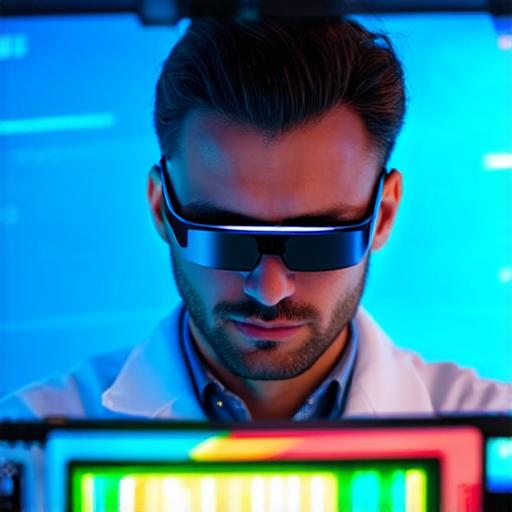
Delving deeper into the intricacies of AR, we find that it is not merely about overlaying digital information onto our environment; it’s about creating immersive and interactive experiences that engage users in unprecedented ways. This article aims to provide a comprehensive exploration of Augmented Reality (AR), its applications, technologies, and future prospects.
The AR Interface: A Symphony of User Experience
The user interface plays a crucial role in AR, enabling seamless interaction between the user and the virtual elements. This is achieved through gesture recognition, voice commands, and tap-to-interact mechanisms. These interfaces are designed to be intuitive, allowing users to navigate and manipulate digital objects with ease.
The AR Engine: A Symphony of Technologies
Behind the scenes, an AR engine orchestrates a symphony of technologies, including computer vision, machine learning, and graphics rendering. These technologies work together to create the illusion of virtual objects coexisting with real-world objects. Computer vision allows the device to understand and interpret the physical environment, while machine learning enables the system to learn from user interactions and adapt accordingly.
AR in Everyday Life: A Symphony of Possibilities
The potential applications of AR are vast and varied. From navigation apps that overlay directions onto streets, to shopping apps that allow users to virtually try on clothes before buying, the possibilities are endless. AR can also be used for artistic expression, such as in apps that allow users to paint or sculpt in 3D space. For example, an architect could use AR to visualize a building design in real-world surroundings before construction begins.
The Future of AR: A Symphony of Innovation
As AR technology continues to evolve, we can expect it to become an integral part of our daily lives. With advancements in hardware, software, and network capabilities, the future of AR promises to be a symphony of innovation, transforming industries and reshaping the way we interact with the world around us. For instance, in healthcare, AR could be used for remote surgeries or patient diagnosis, while in education, it could provide immersive learning experiences.
FAQs
Q: What are some potential industrial applications of AR?
A: AR has the potential to revolutionize industries such as manufacturing, construction, and maintenance by providing workers with real-time guidance and information. For example, a factory worker could use AR glasses to receive instructions for assembly or maintenance tasks directly on the product.
Q: How does AR differ from Mixed Reality (MR)?
A: While AR overlays digital information onto the real world, MR allows users to interact with both real and virtual objects simultaneously, creating a more immersive experience. For example, in an MR application, a user could interact with a holographic object as if it were physically present.
In conclusion, Augmented Reality is not just about adding digital elements to our world; it’s about creating immersive, interactive, and transformative experiences that redefine the boundaries of technology and human interaction. As developers continue to push the boundaries of this technology, the future of AR promises to be a symphony of innovation, reshaping the way we live, work, and play.
